
The Roman amphitheatre of Syracuse is one of the best preserved structures in the city of Syracuse, Sicily, from the early Imperial period.

The Roman amphitheatre of Syracuse is one of the best preserved structures in the city of Syracuse, Sicily, from the early Imperial period.
The amphitheatre is located in the ancient suburb of Neapolis, in what is now an archaeological park, near the Greek theatre and the Altar of Hieron. The amphitheatre is on a different orientation to these other structures and probably follows the lines of an urban plan developed in the late classical period, which is reflected by the street discovered near the Sanctuary of Demeter in the suburb of Achradina. The main road from Achradina to Neapolis led up to the amphitheatre through an Augustan period triumphal arch , whose foundations are still in situ. Between the arch and the amphitheatre, there was a monumental fountain, fed by a large cistern which has not yet been identified. A separate cistern provided water to the amphitheatre itself - it is preserved under the nearby church of San Nicola. [1]


The amphitheatre is largely excavated out of the living rock and in the north east it takes advantage of the slope of the same rocky outcrop which the Greek theatre is built into. Almost nothing of the superstructure, which was built from masonry, survives.
The structure has monumental dimensions, measuring around 140 metres in length and 119 metres in width. [2]
There were two entrances and a complicated system of steps which led from the upper levels to the exterior. At the centre of the arena there was a rectangular pit, which was originally covered. An underground passage ran from this pit to the entrance at the southern end of the amphitheatre. This pit and passage were necessary for machinary used during the shows. The seating in the cavea is separated from the arena itself by a high platform, under which was a vaulted corridor through which gladiators entered the arena. Above this were the front seats, which were reserved for high ranking individuals. The inscriptions carved on the blocks of the railing were edited by Gentili and seem to have been intended to indicate the different seating areas. [3] [1]
Higher up, there are another two covered walkways running around the entire arena under the seating, while a third walkway ran around the top of the monument and may have had a colonnaded portico running around the top of it. From these circular walkways, a series of radial passages allowed access to the various sectors of the cavea. [1]
Four limestone fragments of a monumental inscription still survive from the amphitheatre, which most likely stood above the main entrance at the south end of the arena, according to Gentili. [4] Lugli dates it to the Augustan period, while Golvin gives it a Julio-Claudian date. [5] [6] [7]
The amphitheatre was first excavated in 1839 by Domenico Lo Faso Pietrasanta.
| Wikimedia Commons has media related to Amphitheatre (Syracuse) . |
The primary languages of Calabria are the standard Italian language as well as regional varieties of the Neapolitan and Sicilian languages, all collectively known as Calabrian. In addition, there are 100,000 Arbëresh-Albanian speakers, as well as small numbers of Calabrian Greek speakers and pockets of Occitan.
Giovanni Becatti (1912–1973) was an Italian Classical art historian and archaeologist.
Giuseppe Lugli was Professor of ancient Roman topography at the University of Rome from 1933 to 1961.
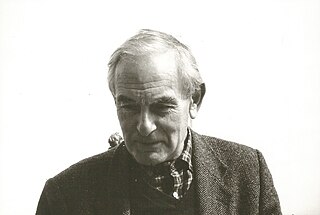
Lucos Cozza was a Roman archaeologist.

Canicattini Bagni is a comune (municipality) in the Province of Syracuse, Sicily (Italy), located about 190 kilometres (120 mi) southeast of Palermo and about 20 kilometres (12 mi) southwest of Syracuse. As of 31 December 2004, it had a population of 7,415 and an area of 15.1 square kilometres (5.8 sq mi).
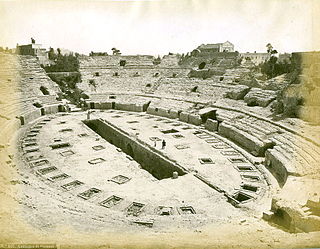
The Flavian Amphitheater, located in Pozzuoli, is the third-largest Roman amphitheater in Italy. Only the Roman Colosseum and the Amphitheatre of Capua are larger. It was likely built by the same architects who previously constructed the Roman Colosseum. The name "Flavian Amphitheater" is primarily associated with the Roman Colosseum.

Akrai was a Greek colony founded in Sicily by the Syracusans in 663 BC. It was located near the modern Palazzolo Acreide.
Elio Lo Cascio is an Italian historian and teacher of Roman history at the Sapienza University of Rome. Lo Cascio's main research interests are the institutional, administrative, social and economic history of Ancient Rome from the Republic to the Late Empire, and Roman population history.

The Greek theatre of Syracuse lies on the south slopes of the Temenite hill, overlooking the modern city of Syracuse in southeastern Sicily. It was first built in the 5th century BC, rebuilt in the 3rd century BC and renovated again in the Roman period. Today, it is a part of the Unesco World Heritage Site of "Syracuse and the Rocky Necropolis of Pantalica".
Despite its abandoned state, it remains one of the most beautiful locations in the world, offering the most grandiose and picturesque spectacle that there is.
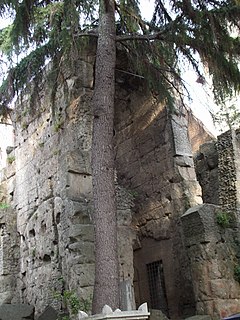
The Castra Albana[ˈkastra alˈbaːna] was a permanent legionary fortress of the Legio II Parthica, founded by the Emperor Septimius Severus (193-211) on the modern site of Albano Laziale. Today, the ruins of the structures inside the castra, such as the so-called Baths of Caracalla and the Amphitheatre represent one of the largest collections of Roman archaeological remains in Latium, outside of Rome.
Ettore Gabrici was an Italian archaeologist and numismatist.

Rofalco was a fortified late-Etruscan settlement, located about twenty km north of Vulci, at the edge of the Selva del Lamone volcanic plateau. The site controlled the important natural route formed by the valley of the Olpeta stream and contributed to the defense and the organization of the southeastern portion of the ancient territory of Vulci.
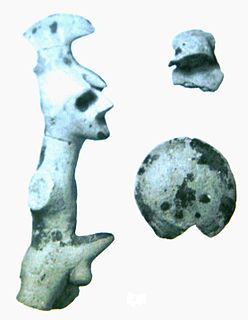
The archaeological site of Polizzello or mountain of Polizzello was a site inhabited probably from the eleventh to the sixth century BC
Eugenio Manni was an Italian ancient historian.
Pierre d'Angicourt, in French Pierre de Angicourt, in Latin Petrus de Angicuria was a French architect, for about thirty years at the service of Angevin kings of the Kingdom of Naples during the second half of the thirteenth century.
Studi sul Settecento Romano is an Italian yearly journal of art history, devoted in particular to the study of artistic and architectural culture in eighteenth-century Rome.
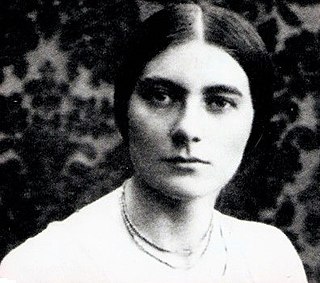
Anna Maria Brizio (1902-1982) was professor of art history at the University of Milan, a member of the Commissione Vinciana and an authority on the work of Leonardo da Vinci.

The Amphitheatre of Catania is a Roman amphitheatre in Catania, Sicily, southern Italy, built in the Roman Imperial period, probably in the 2nd century AD, on the northern edge of the ancient city at the base of the Montevergine hill. Only a small section of the structure is now visible, below ground level, to the north of Piazza Stesicoro. This area is now the historic centre of the city, but was then on the outskirts of the ancient town and also occupied by the necropolis of Catania. The structure is part of the Parco archeologico greco-romano di Catania.

The Amphitheatre of Capua was a Roman amphitheatre in the city of Capua, second only to the Colosseum in size and probably the model for it. It may have been the first amphitheatre to be built by the Romans. and was the location of the first and most famous gladiator school.
Umberto Laffi is an Italian historian.